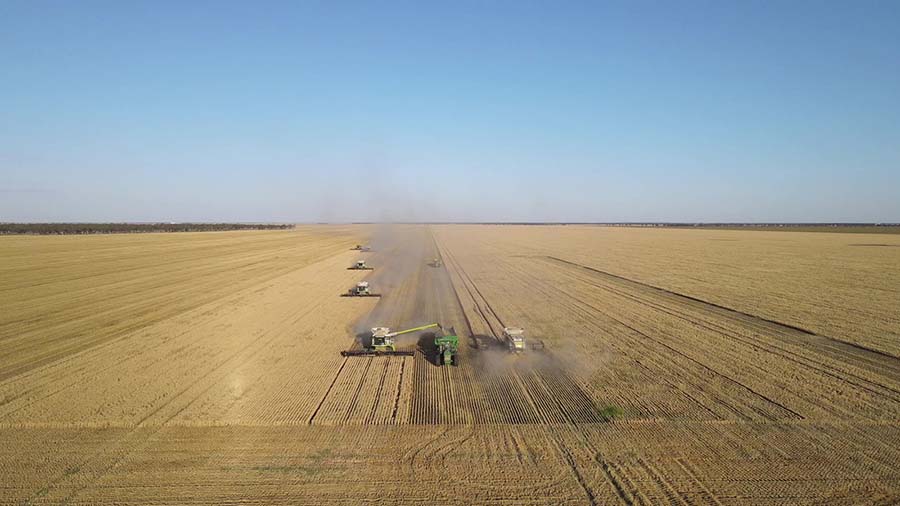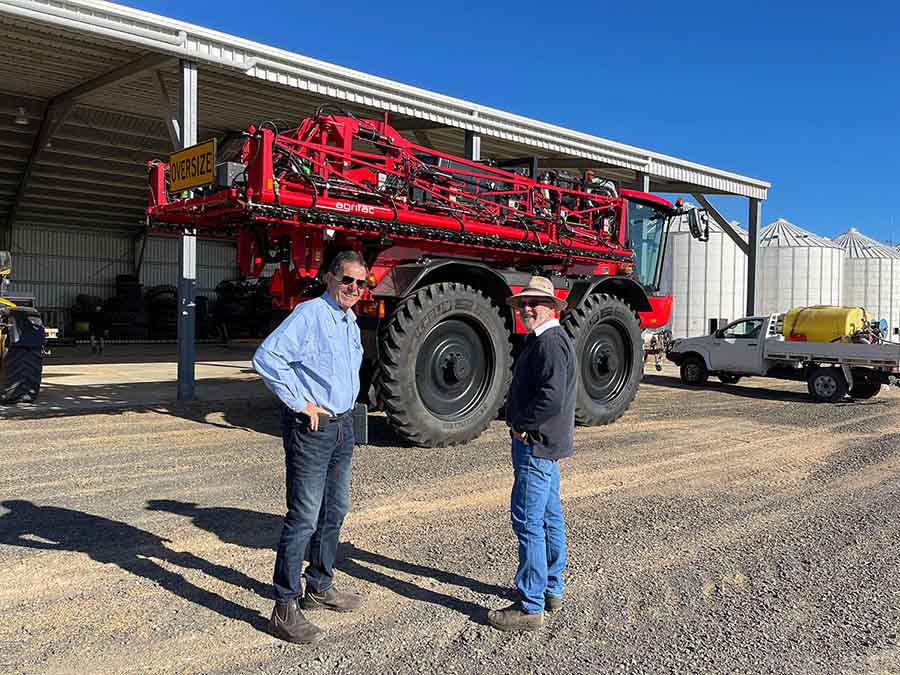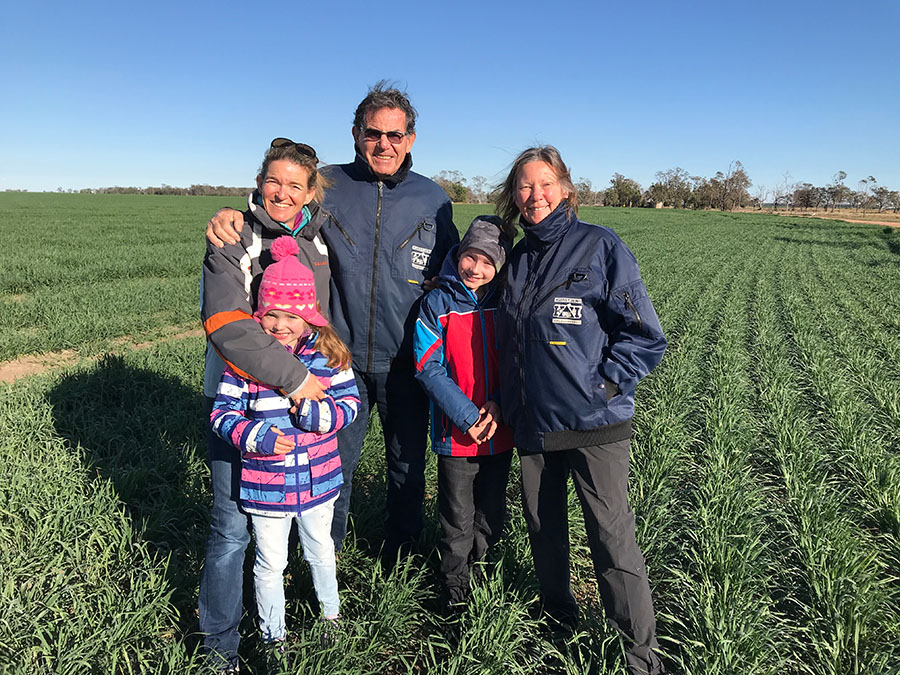When the Kurstjens first procured Beefwood it had historically been used as grazing land for livestock. After decades of grazing, the soils had been compacted and this decrease in the porosity of soil was inhibiting its physical, chemical and biological functions.
After decades of grazing, the soils had been compacted. This decrease in the porosity of soil was inhibiting its physical, chemical and biological functions.
Degraded soil structure can significantly diminish the yield of dryland crops as root systems can't effectively penetrate the soil and therefore are unable to access its available water and nutrients. Poor soil porosity reduces fertiliser efficiency and increases overhead costs as more fertiliser input is required.
To create and maintain the soil health and structure needed for dryland cropping, the Kurstjens had to employ several innovative practices.
 The fields were developed around permanent wheel tracks where the zones of crops and the traffic lanes were separated.
The fields were developed around permanent wheel tracks where the zones of crops and the traffic lanes were separated.
Beefwood started operating under controlled traffic (or tramline) systems. The fields were developed around permanent wheel tracks where the zones of crops and the traffic lanes were separated. This confined compaction to the permanent tramlines, allowing the crop zones to retain good soil structure. Additionally, this practice saves on fuel as the machines drive smoothly on compacted tracks.
To set up their operation in this way, the Kurstjens needed to standardise all equipment for compatibility of width and tracks. The tracks were set up with a width of 3 metres, with all implements operating at 12, 24 and 48 metres in width. These tramlines need to be renovated regularly and especially after wet seasons as deep wheel tracks are created when the soil is moist.
No-till farming / Planting in the stubble
To maintain better soil structure, the Kurstjens also implemented no-till farming systems. Tilling leaves the ground bare, which makes the nutrient-rich topsoil far more likely to be eroded by wind and water. It also disturbs the many microbes and insects that maintain healthy soil biology and inhibits the ability of the soil to absorb and infiltrate water. No-till farming allows the soil structure to remain intact with the crop residue left on top of the soil protecting it from erosion.
No-till farming allows the soil structure to remain intact with the crop residue left on top of the soil protecting it from erosion.
In addition to no-till farming, the Kurstjens sow new-season crops into the stubble rather than burning off the stubble before planting. This practice goes hand in hand with no-till farming as stubble-retained systems offer many benefits, including increased moisture retention, reduced run-off and wind erosion, lower evaporation and higher water infiltration rates.
Specialised sowing equipment is paramount to remaining efficient when planting in stubble. The well-designed NDF planters used on Beefwood can effectively penetrate and plant in the stubble.
Spot spraying
Finally, the precision application of herbicides ensures Beefwood's soils are well maintained. The weed density across the 12,500-hectare operation is low enough that optical sprayers can be used to efficiently spot spray. This significantly reduces the amount of chemical input required, which minimises expenditure and environmental impact. It also reduces the increasing risk of herbicide resistance.
One of the challenges the Kurstjens found with spot spraying was the increased labour costs involved. For this reason, they started using autonomous technology for weed control.
In 2020, Beefwood invested in a camera sprayer to attach to their existing machinery. As the camera travels along the fields, it captures an image every few milliseconds, identifies if there are weeds present and sprays just that weed. This has reduced their chemical input further and they now use approximately 10% of the herbicide they were originally using.
These practices have successfully transformed the property from grazing land into a highly productive cropping operation. Because plough blades haven't touched Beefwood soils in over a decade the soil structure is healthy and resilient.
Moisture is retained with little lost to run-off, meaning that irrigation is not required. The soil structure is preserved and maintained by planting in the stubble, controlled traffic methods and conservative use of herbicides.
 Gerrit and Pam Kurstjens with their family
Gerrit and Pam Kurstjens with their family





